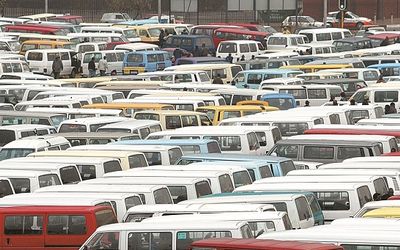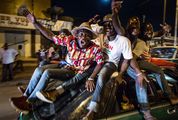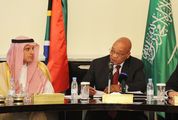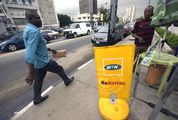Idle taxis earn millions as Rea Vaya opens new phase
by Olebogeng Molatlhwa,
2016-03-07 21:49:35.0
TAXI owners are striking it rich through Johannesburg’s Rea Vaya bus rapid transit system.
The owners of 317 minibus taxis were paid R263m to take their vehicles off the road. Owners pocketed about R830,000 per taxi as compensation for restraint of trade. In return they must permanently idle the vehicles that operated on routes now covered by Rea Vaya buses.
The taxis will make way for Phase 1B of Rea Vaya, which operates in Soweto, Noordgesig, Pennyville, Riverlea, Bosmont, Coronationville, Newclare, Westbury, Westdene, Melville, Auckland Park, Parktown and Braamfontein.
In addition to being compensated for idling their vehicles, taxi owners will be paid R2.6bn, or R221m annually, to run the bus system for the next 12 years.
The City of Johannesburg signed an agreement in June 2015 with operating company Ditsamaiso, for the operation of routes along Phase 1B. After two years of negotiations, taxi and bus operators who worked along the affected routes became shareholders in the operating company.
Phase 1A and 1B of the Rea Vaya project cost an estimated R3bn to build but the bus system is unable to reach the required passenger volumes to break even because population densities along the routes are too low.
The city’s executive director of transportation, Lisa Seftel, said last year that Rea Vaya was exposed to about 10,000 commuters who could use the service along the corridors it served. This was compared with a minimum of 14,000 passengers in South American cities with similar systems.
In response to the shortage of passengers, the city launched Corridors of Freedom, an initiative aimed at increasing population densities along the main transport routes by encouraging property developers and owners to build high-rise blocks near bus routes, enabling residents of Joburg to live closer to their places of work.
Speaking at the city’s investor roadshow breakfast on Friday, city manager Trevor Fowler said plans were afoot to increase densification along particular transport routes to accommodate more than 40,000/km².
The current population density is 2,000/km².
© BDlive 2015

Picture: SUNDAY TIMES
TAXI owners are striking it rich through Johannesburg’s Rea Vaya bus rapid transit system.
The owners of 317 minibus taxis were paid R263m to take their vehicles off the road. Owners pocketed about R830,000 per taxi as compensation for restraint of trade. In return they must permanently idle the vehicles that operated on routes now covered by Rea Vaya buses.
The taxis will make way for Phase 1B of Rea Vaya, which operates in Soweto, Noordgesig, Pennyville, Riverlea, Bosmont, Coronationville, Newclare, Westbury, Westdene, Melville, Auckland Park, Parktown and Braamfontein.
In addition to being compensated for idling their vehicles, taxi owners will be paid R2.6bn, or R221m annually, to run the bus system for the next 12 years.
The City of Johannesburg signed an agreement in June 2015 with operating company Ditsamaiso, for the operation of routes along Phase 1B. After two years of negotiations, taxi and bus operators who worked along the affected routes became shareholders in the operating company.
Phase 1A and 1B of the Rea Vaya project cost an estimated R3bn to build but the bus system is unable to reach the required passenger volumes to break even because population densities along the routes are too low.
The city’s executive director of transportation, Lisa Seftel, said last year that Rea Vaya was exposed to about 10,000 commuters who could use the service along the corridors it served. This was compared with a minimum of 14,000 passengers in South American cities with similar systems.
In response to the shortage of passengers, the city launched Corridors of Freedom, an initiative aimed at increasing population densities along the main transport routes by encouraging property developers and owners to build high-rise blocks near bus routes, enabling residents of Joburg to live closer to their places of work.
Speaking at the city’s investor roadshow breakfast on Friday, city manager Trevor Fowler said plans were afoot to increase densification along particular transport routes to accommodate more than 40,000/km².
The current population density is 2,000/km².
© BDlive 2015




















Change: -0.47%
Change: -0.57%
Change: -1.76%
Change: -0.34%
Change: 0.02%
Data supplied by Profile Data
Change: -1.49%
Change: 0.08%
Change: -0.47%
Change: 0.00%
Change: -0.04%
Data supplied by Profile Data
Change: -0.34%
Change: 0.03%
Change: -0.10%
Change: -0.22%
Change: -0.69%
Data supplied by Profile Data
Change: -0.28%
Change: -1.15%
Change: -0.07%
Change: -1.21%
Change: -0.22%
Data supplied by Profile Data